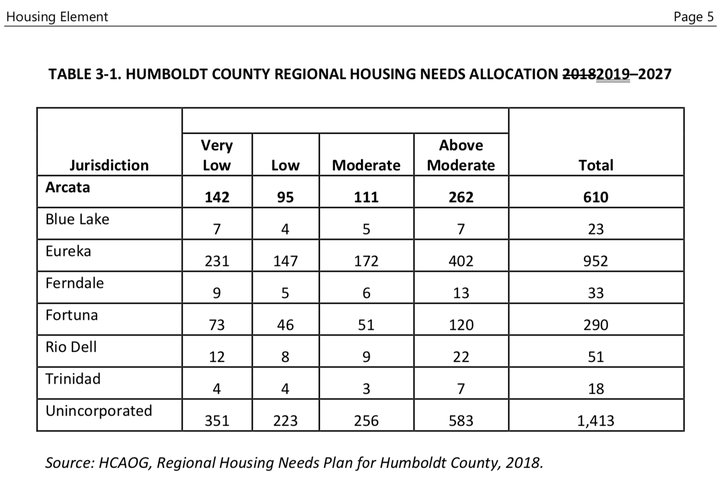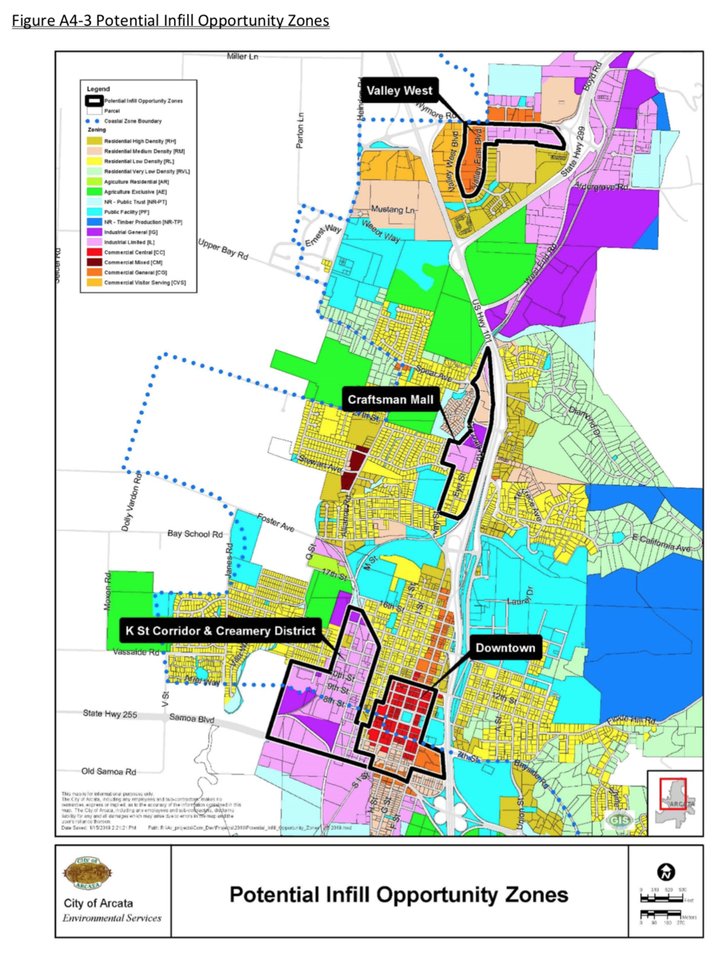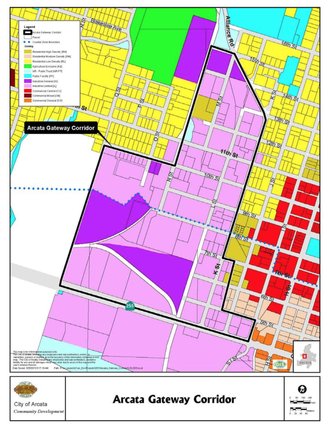The Arcata City Council is getting close to voting on a new plan for housing in the city, and its backers are hoping that it will speed up the permit application process, move students in more affordable rental units and bring down the cost of homes.
Arcata’s Housing Element aims to address the housing needs of the city until 2027. The document is set to go in front of the City Council on Wednesday, Dec. 18. While it is not as progressive as the County’s Housing Element, which calls for a possible referendum to allow the county to start its own department to build and manage housing, it does put forth some big proposals.

Regional Housing Needs Allocations
To address housing needs, the Housing Element has a focus on pushing infill projects and rezoning some areas to allow for residential developments. David Loya, the director of community development for Arcata, told the Outpost that the Housing Element has been thoroughly vetted by the Arcata community. He said the consensus in the community is that people want more infill.
“That’s definitely the emphasis we have received feedback on,” Loya said.
One area of particular interest is the Valley West shopping center. By rezoning the area, residential projects will be able to be built in areas that were once zoned solely for commercial development. Loya wants to rewrite the zoning of the Valley West area to allow for higher volume residential builds and infill projects.
“Right now you can’t do a mixed-use project, but in the future if we rezone it, it may make it more profitable and attractive,” Loya said.

Potential Infill Areas
To incentivize development the City is offering grants, and Loya said a discussion on potential tax breaks will be happening at a later date.
Other areas of interest for development are the Arcata Gateway Corridor that runs along K Street from Samoa Boulevard to 11th Street. This area is currently zoned for industrial uses. The Housing Element states that a rezoning of this area could result in “the development of a specific plan to create a neighborhood of midrise, mixed-use buildings.” The area consists of nearly 90 acres within a few blocks of Arcata’s downtown.

Arcata Gateway Corridor. Potential development area in purple.
“This is a key area for me because it is so close to downtown and the Plaza” said Paul Pitino, Arcata’s vice-mayor. “It’s an attractive place to have an apartment and is close to transportation, shopping and groceries.”
The Housing Element also addresses the need to speed up the review process for applications. Policy HE-8 of the element would “eliminate unnecessary discretionary review procedures and delays in the housing development process due to complex processing procedures for housing projects, which may be under tight timelines imposed by state and federal funding programs.”
The building of new housing units will help ease the strain on the current housing stock, which mainly consists of homes that are 40+ years old. New units may also help with economic burdens, too. The median rent in Arcata is $1,015 for a two-bedroom place and the median home price is roughly $350,000, while the median household income is only $30,866. This gap is highlighted in the Housing Element, by pointing out the large number of people overpaying for rent. (“Overpaying” is defined as having to pay more than 30% of monthly income.)
“A significant proportion of Arcata’s residents (56.92 percent) are overpaying for housing costs,” the Housing Element reads. “Severe overpayment is defined as monthly housing costs in excess of 50 percent of a household’s income. A moderate proportion of Arcata’s residents (35.77 percent) are severely overpaying for housing costs.”
Pitino hopes that simply building more rental units will help to bring down costs and alleviate some of that economic burden. He believes that student rentals are eating up a chunk of the housing stock, thus driving up home prices. Family households in Arcata make up nearly 40 percent of the housing stock, and in 2017, 37 percent were owner-occupied. HSU students consist of nearly 6,000 renters in the Arcata, Eureka and McKinleyville areas. Pitino believes that building more units priced for college students will entice them to move out of the single-family homes.

Population Trends
“What happens is people buy single-family homes and turn them into student housing and the family that wants to buy those houses can’t,” Pitino said. “As we build more housing that is focused towards students, then the price will stabilize.”
The city is already making strides at addressing the housing needs of its residents by having approved 58 units for the 2027 planning cycle. Arcata has 60.9 acres of vacant land set aside to address its low- and very low-income residential needs, however it lacks significant space for development of medium- and high-income residential builds — a whopping 4.4 acres for the two groups. Although the Housing Element process seems to be going smoothly for now, Loya said that community needs to continue to work together.
“We as a community need to take control without hesitation now as opposed to restricting housing,” Loya said. “It’s important for people to get involved and engaged.”
CLICK TO MANAGE